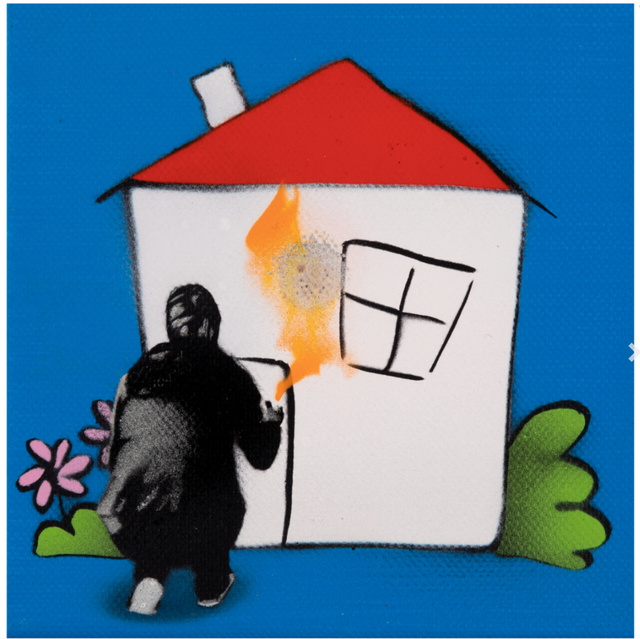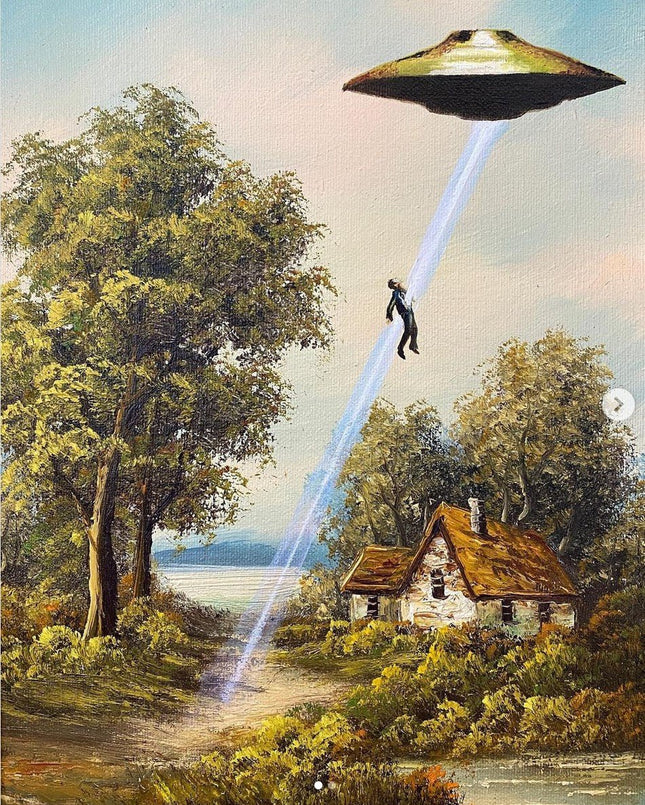
House & Home

Dave Pollot Still Wanna Believe? III Archival Print by Dave Pollot
Still Wanna Believe? III Limited Edition Archival Pigment Fine Art Prints on Fine Art Paper by Graffiti Street Art and Pop Culture Artist Dave Pollot. 2021 Signed & Numbered Limited Edition of 45 Artwork Size 24x17 Dave Pollot's "Still Wanna Believe? III": A Whimsical Blend of Reality and Fantasy Dave Pollot's "Still Wanna Believe? III" is a limited edition work that skillfully dances on the boundary between the real and the imagined, a captivating example of how pop culture permeates the realm of Street Pop Art and Graffiti Artwork. This archival pigment fine art print on fine art paper features a sizeable 24x17 inches canvas, limited to a series of 45 signed and numbered editions. Released in 2021, Pollot's piece weaves together the traditional idyll of pastoral art with the otherworldly intrigue of science fiction, creating a visual discourse that transcends the conventional scope of graffiti art. The American artist, celebrated for his revitalization of thrift art through the lens of pop culture, deftly infuses a classic landscape with the arresting image of a UFO abducting a human subject. By doing so, Pollot's "Still Wanna Believe? III" bridges not only different genres but also different worlds, challenging the viewer to reconsider the boundaries of traditional art within the public sphere. Artistic Technique and Cultural Commentary Pollot's selection of archival pigment for his prints ensures rich color rendering and longevity, allowing his artwork's fine details and vibrant juxtapositions to stand the test of time. The use of fine art paper complements the pigment, giving the print a tangible quality that is both visually and texturally pleasing, much like the canvases of classical art that Pollot so often reimagines. "Still Wanna Believe? III" does more than depict an unlikely scenario; it reflects our enduring fascination with the unknown and the allure of conspiracy theories. Pollot plays with the theme of belief and skepticism, invoking the iconic phrase "I want to believe" from the realm of UFO enthusiasts and embedding it into a tranquil rural scene. The result is an artwork that is as much a conversation starter as a statement piece, encapsulating the spirit of questioning and wonder that defines much of contemporary pop art. The Pop Art Revolution of Dave Pollot Dave Pollot's contributions to the world of Street Pop Art and Graffiti Artwork are marked by his wit, creativity, and the seamless integration of pop culture into classical motifs. "Still Wanna Believe? III" is a prime example of Pollot's artistry, as it encapsulates his playful subversion of art historical norms and the synthesis of popular mythos with delicate art sensibilities. The limited edition nature of the piece adds an element of exclusivity, marrying the fleeting essence of street art with the enduring quality of fine art collections. In this work, Pollot creates a space for the viewer to engage with the whimsical possibilities of otherworldly encounters and establishes his art as a pivotal point of convergence where the ordinary meets the extraordinary. With his distinctive approach, Pollot continues to expand the dialogue around what constitutes art in the public imagination, and "Still Wanna Believe? III" stands as a vibrant testament to his vision. The print is not just a representation of Pollot's skill but a reflection of the contemporary zeitgeist, where the lines between art forms are blurred, and the pop culture narratives of one era can become the artistic treasures of the next.
$406.00


